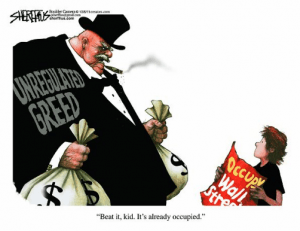
Dogs of the Dow 2024: Howl or Howl Not?
Updated April 15, 2024
Originating from the foundational principles established by Charles Dow, the creator of the Dow Theory, the “Dogs of the Dow” strategy is a contrarian investment approach designed to outperform the Dow Jones Industrial Average. This strategy capitalizes on the ten highest-yielding blue-chip stocks within the index, predicated on the belief that these stocks, with their elevated dividend yields, are temporarily undervalued and poised to reverse their intrinsic value.
In his time, Charles Dow highlighted the cyclical nature of stocks and market indices, suggesting that understanding these patterns could be critical to successful investing. The Dogs of the Dow strategy embodies this by targeting stocks that appear to be in a downturn and are, therefore, neglected by most investors.
In Plato’s words, “The beginning is the most important part of the work.” This is particularly relevant to this investment strategy, where the initial selection of undervalued stocks is critical. Investors are encouraged to adopt a philosophy of wisdom and courage, venturing where others might hesitate, thus potentially reaping greater rewards through capital appreciation and robust dividend yields.
However, it is vital to acknowledge modern markets’ evolving dynamics, which some tactical investors argue have shifted significantly since Dow’s era. These investors contend that the sheer volume of real-time data and advanced analytical tools today has transformed investment strategies. The static nature of annual reselection based on dividend yields alone may not sufficiently account for faster-moving economic indicators or global events affecting stock performance.
To implement the Dogs of the Dow strategy effectively, investors must embrace the wisdom of historical insights and the realities of contemporary market conditions. This requires a blend of analytical skills to discern which blue-chip stocks are genuinely undervalued rather than structurally impaired and the intuition to gauge market sentiment.
Plato also remarked, “Necessity is the mother of invention.” Modern investing could interpret this as the need for continuous adaptation and innovation in investment strategies. The successful investor must, therefore, be contrarian not just in stock selection but also in thought, challenging prevailing market doctrines and adapting strategies to align with the changing financial landscape.
In conclusion, while the Dogs of the Dow strategy provides a structured path to potentially higher returns through disciplined investment in high-dividend-yielding stocks, its effectiveness in contemporary markets requires a nuanced application informed by historical theories and modern-day market analysis. This approach demands a contrarian mindset and a profound understanding of both market fundamentals and the broader economic environment.
Current Dogs of the Dow: As of April 15, 2024
The “Dogs of the Dow” strategy remains a favoured approach for investors seeking out potentially undervalued stocks within the Dow Jones Industrial Average. This tactic zeroes in on the ten highest dividend-yielding stocks within the index, banking on their potential for a resurgence. Here’s the latest lineup of these stocks, renowned for their robust dividend yields and prospects for price growth:
1. 3M Company (MMM) – Renowned for its diverse technology and reliable dividend distributions.
2. Chevron (CVX) – A major force in the energy sector with a solid dividend track record.
3. Cisco Systems (CSCO) – A top-tier player in networking technology, offering appealing yields.
4. Coca-Cola (KO) – An iconic beverage giant with a lengthy history of dividends.
5. Dow Inc. (DOW) – A leading name in material science, providing generous dividends.
6. IBM (IBM) – A major tech entity with significant dividend payouts and a focus on innovation.
7. Johnson & Johnson (JNJ) – A titan in healthcare known for its consistent dividend flow.
8. Merck & Co. (MRK) – Prominent in pharmaceuticals with robust dividend offerings.
9. Verizon Communications (VZ) – A key telecom player offering attractive yields.
10. Walgreens Boots Alliance (WBA) – A retail and pharmacy leader committed to dividend returns.
Investors adopting the Dogs of the Dow strategy may consider these stocks for potential inclusion in their portfolios, weighing the blend of yield and potential price growth. While grounded in historical market performance, this strategy demands careful assessment of current market dynamics and individual financial objectives.
Tactical Investor Version
As an investor in the modern era of hot money, it’s essential to take a tactical approach to stock selection. The original theory, which focused on high-paying dividend stocks, may no longer be the most effective investment strategy. That’s why we’ve developed a new and improved version of the theory: the Tactical Investor Dogs of the Dow methodology.
Rather than blindly selecting the highest-paying dividend stocks, we take a more nuanced approach. Our strategy is to invest equal capital in stocks trading at highly oversold levels on the monthly charts. By doing so, we can take advantage of the market’s long-term outlook, identifying stocks that have great potential but are currently disliked by the masses.
This approach is based on the principles of Mass Psychology and Contrarian investing. We understand that the masses are often wrong regarding the markets, and we seek out stocks that have fallen out of favour but have strong fundamentals. By investing in such stocks, we can take advantage of market inefficiencies and generate superior returns.
Unlike the original theory, we don’t hold onto stocks for a year. Instead, we hold them until they reach the overbought range, and then we close the position and find a new replacement. This way, we can adapt to changing market conditions and ensure our portfolio is always positioned to generate the best possible returns.
College Investor Concurs That the Original Strategy is Not That Great
The Dogs of the Dow strategy has been rewarding investors for the past 20 years with a 10.8% return, the same as the total Dow Jones Industrial Average over the same period. However, this strategy has proven to be even more successful. It has returned 12.6% to investors over the past two decades.
Investors who follow the Small Dow Dogs strategy invest in only 5 of the highest-yielding Dow components with the lowest stock price. At the same time, the traditional approach suggests investing in the ten highest-yielding stocks regardless of stock price. Small Dogs of the Dow investors have achieved superior returns by concentrating their positions.
Comparing the performance of the Dogs of the Dow to the S&P500 index, it is clear that the former has been more profitable for investors. A $1,000 investment in the S&P500 index would have grown to $6,254 over the past 20 years. However, the same investment in the Dogs of the Dow and the whole Dow Jones Industrial Average would have grown to $7,776. The Small Dogs of the Dow would have turned the same $1,000 into an impressive $10,734 over the same period. Investors who follow the Dogs of the Dow strategy have achieved significant returns by being contrarian and tactical and using mass psychology to their advantage.
The Tactical Investor modified theory holds excellent promise when applied diligently and executed with precision, particularly when identifying the Dogs of the Dow 2023—a crucial aspect. Though the original theory may have faltered, this adapted approach, rooted in selecting the appropriate Dogs of the Dow 2023, has the potential to yield remarkable results when harnessed effectively.
Empirical Evidence Supporting the Dogs of the Dow Strategy
While the Dogs of the Dow strategy has gained popularity among investors seeking undervalued stocks, it’s crucial to explore empirical research assessing its effectiveness over time. This section examines various studies that evaluate the performance of this investment strategy, offering insights into its historical success and limitations.
Insights from Historical Performance
A seminal study by O’Higgins, published in the Financial Analysts Journal in 1991, analyzed the strategy from 1973 to 1990. It revealed an impressive annual return of 20.3%, surpassing the Dow Jones Industrial Average by 4.8% per year. This suggests the strategy effectively capitalized on market cycles by investing in undervalued stocks with high dividend yields.
Subsequent research in a 2010 study from the Journal of Investing extended the analysis to 2000-2009, showing a 15.6% average annual return for the Dogs of the Dow, outperforming the Dow Jones Industrial Average by 3.3% annually. These findings underscore the strategy’s potential to deliver superior returns by focusing on high-yield dividend stocks.
Moreover, a 2012 Journal of Financial and Strategic Decisions study compared the strategy to the S&P 500 from 1996 to 2011, confirming its outperformance. This highlights its effectiveness against the Dow and a broader market index.
Considerations and Modern Perspectives: Despite these historical successes, investors must recognize that no strategy is foolproof. Past performance does not guarantee future results, and market dynamics can evolve, impacting strategy effectiveness. As Plato noted, “The beginning is the most important part of the work,” emphasizing the significance of initial strategy and ongoing adaptation.
Small Dow dogs Pack a more potent punch?
Going back 20 years, the Dogs of the Dow rewarded investors with a return of 10.8%. Interestingly, the total Dow Jones Industrial Average rewarded investors with the same return – 10.8% for the last 20 years.
For comparison, $1,000 invested in the S&P500 index would have grown to $6,254. The same investment in the Dogs of the Dow and the whole Dow Jones Industrial Average would have grown to $7,776. Finally, the Small Dogs of the Dow would have turned $1,000 into $10,734 in the same 20-year period. The College Investor
Small Dogs Vs Big Dogs
The “Dogs of the Dow” strategy involves buying the ten highest-yielding stocks in the Dow Jones Industrial Average at the beginning of each year, while the “Small Dogs of the Dow” strategy consists of buying the five lowest-priced stocks of the 10 Dogs of the Dow.
While both strategies have proponents, some argue that the Small Dogs of the Dow strategy may be a better approach. For example, a study by Forbes found that the Small Dogs of the Dow outperformed the Dogs of the Dow in nine out of ten years from 2003 to 2013 and the Dow Jones Industrial Average itself in seven out of ten years during that same period.
One reason for the outperformance of the Small Dogs
Is that the strategy focuses on the stocks that have the most room for growth rather than just the highest-yielding stocks. Additionally, the Small Dogs of the Dow strategy may provide a higher level of diversification since it only includes five stocks instead of ten.
Another study by the New York Times found similar results, showing that the Small Dogs of the Dow outperformed the Dogs of the Dow by an average of 3% per year between 1988 and 2009.
However, it is essential to note that past performance does not necessarily indicate future results and any investment strategy carries risks. Investors should carefully consider their investment goals, risk tolerance, and investment horizon before investing in any system, including the Dogs of the Dow or the Small Dogs of the Dow. Consulting with a financial advisor may also be beneficial in determining the best investment approach for an individual’s specific needs and circumstances.
Random Reflections on Investing
A successful strategy incorporates a potent fusion of mass psychology and technical analysis in investment. By comprehending the behaviour of market participants as a crowd, one obtains valuable insights into the market’s pulse. Market psychology is crucial in identifying trends, making subsequent analysis relatively straightforward. Moreover, incorporating the fundamental principles of contrarian investing can elevate trading skills to new heights, especially when combined with collective wisdom and technical analysis.
Lastly, maintaining a comprehensive trading journal proves invaluable in gaining insights into one’s mindset and formulating a robust battle plan to confront any challenges.
From Our Archive: A Diverse Range of Articles to Explore
Fed Data illustrates Economic recovery is a bad Joke

Nasdaq monthly chart? What is it saying

George Soros Criticises Trump: Protests Funded by His Organisation
Mikhail Khodorkovsky-Corrupt Neocon Oligarch
Trump wins debate- media lose along with Hillary
Why is Obama s purposely allowing radical Muslims into the Country
Russia vs USA: Timeline of US Actions Provoking Russia

Google Finance: What’s The Long Term Outlook For Google

What Is My Socioeconomic Status? Rich vs Poor

Market Rally: Will the Market Rally This Summer

The stock market is stuck in a trading zone

The Rise of Covid Resistance: A Response to Pandemic Fatigue

Fed-Fuelled Frenzy: Unveiling the Asset Bubble Phenomenon

Good Stock: What Is it?
Flush with Cash: Investors on Edge, Hesitant to Deploy Capital


